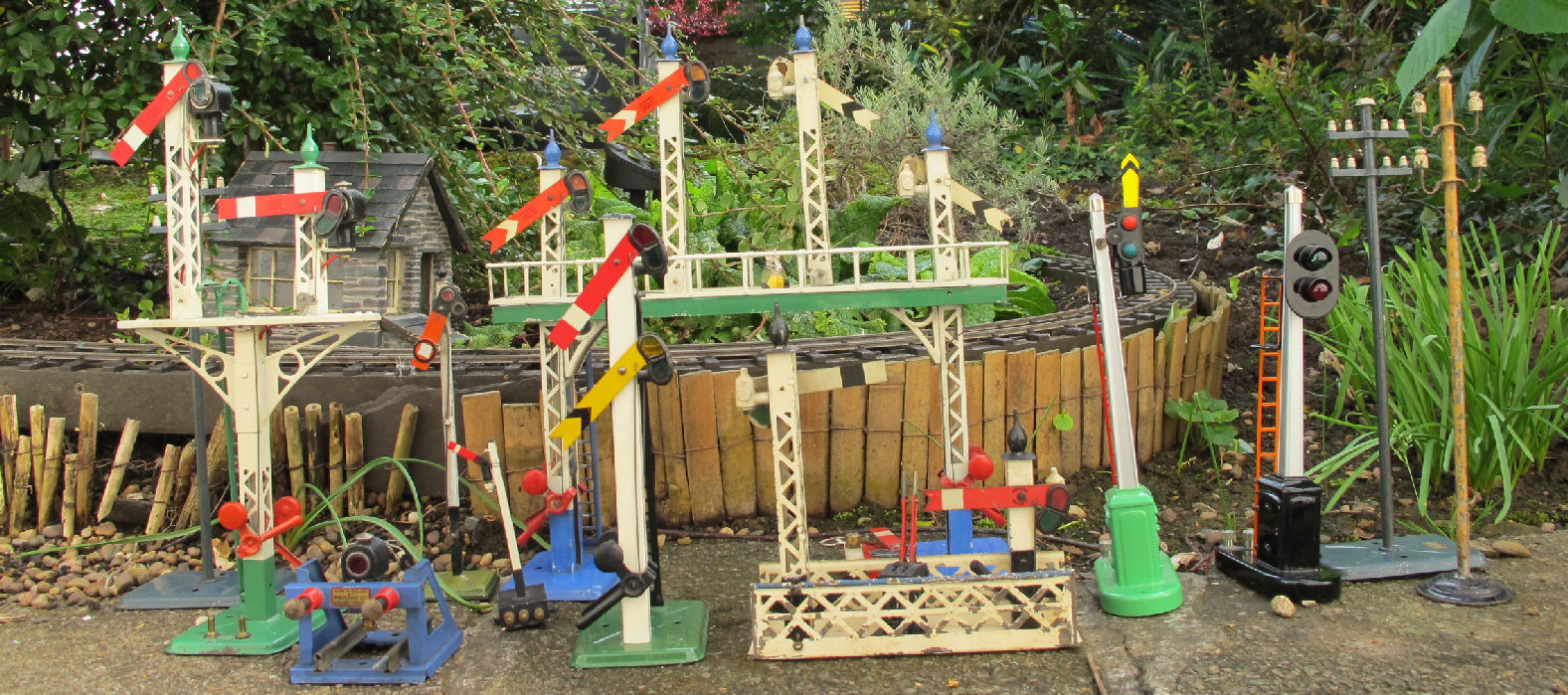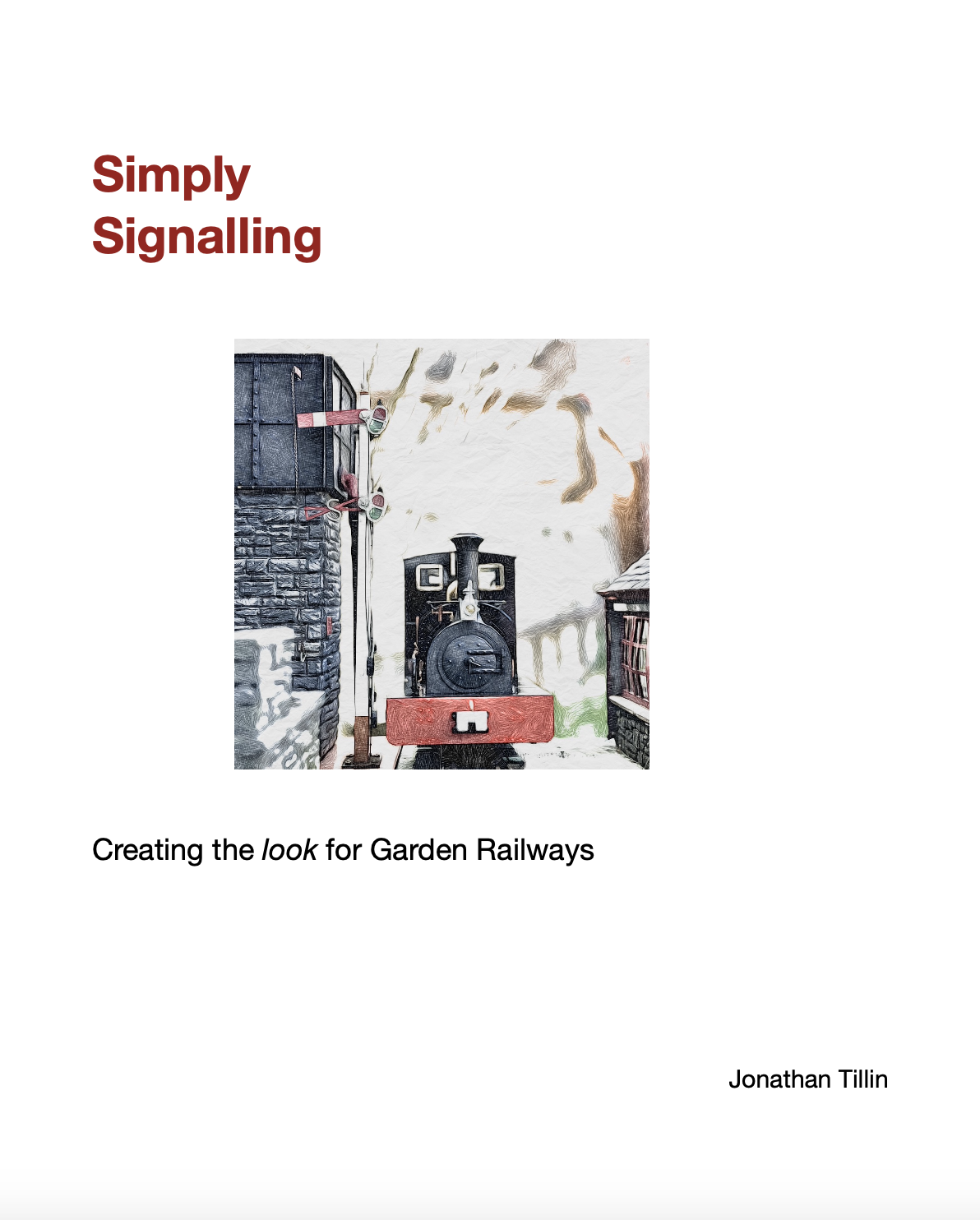
Download a free copy in PDF format (about 190Mb)
The Battle of the Gauges
Trains run on tracks. Tracks are made of lots of bits (if you want more info you will need to visit a serious site). Railway people don't call them tracks, they name them LINES. Hence railway line not railway track - unless of course it's a single line then it's called a single track (or visa versa).
The tracks are fitted with fixed rails a uniform distance apart - although, weirdly, they do meet at the horizon. The distance between the inside edges is called the gauge. For all sorts of reasons, but chiefly because engineers can never admit a solution already exists, the gauge differs from railway to railway.
Railway folks use slang terms to describe the gauge: four-foot; two-foot etc. So, hopefully that's cleared that up.

Some Gauges:
Four Foot Standard; Two Foot Narrow; Gnat's Whisker Model Railway
Of course, a four-foot track is wider than four foot; and, by the same token, a two-foot track is less than two feet. But then you probably guessed that. We haven't even mentioned Mr Brunel's seven foot and one-quarter inch Broad Gauge! That would involve some serious fawning so better move on hey?
The wheels on the train go round and round; round and round; round and - oh, we've stopped at a red signal.
Signal Simplicity
The Logic of Signals Explained
All proper signals are of the 'lower quadrant' semaphore type but the really proper ones are those designed and used by the Great Western Railway. Signals are delineated as Distant and Stop but Stop is further divided into Home and Starter, thus:
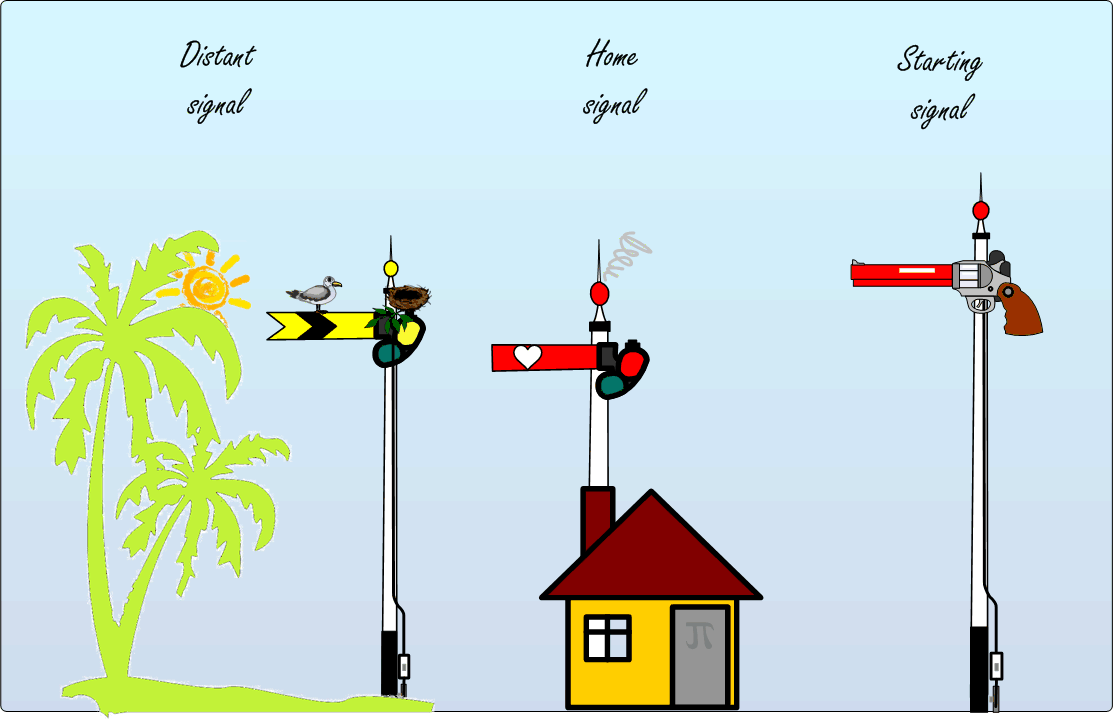
Curious Contraptions
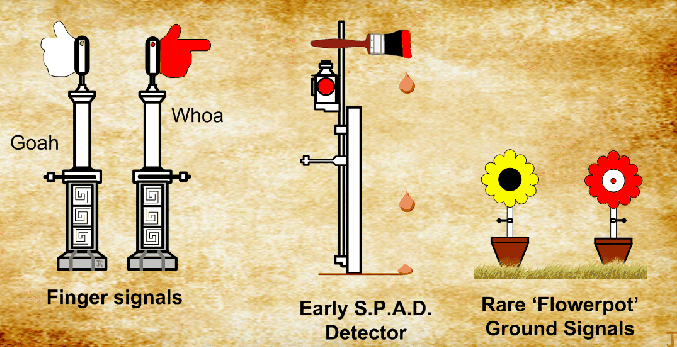
Rare Defunct Signals
- Finger Signals were mounted on intricate cast-iron posts. Very Victorian.
- S.P.A.D. (Signal Passed At Danger) the paintbrush swung out and daubed the clothes of the driver, thus identifying the culprit (bad news).
- Flowerpot signals were quickly discontinued as they tended to follow the sun (what sun!?) and could therefore give false indications.
Even after the invention of semaphore signals there were wonderfully joyous deviations from the obvious. Here are a few:
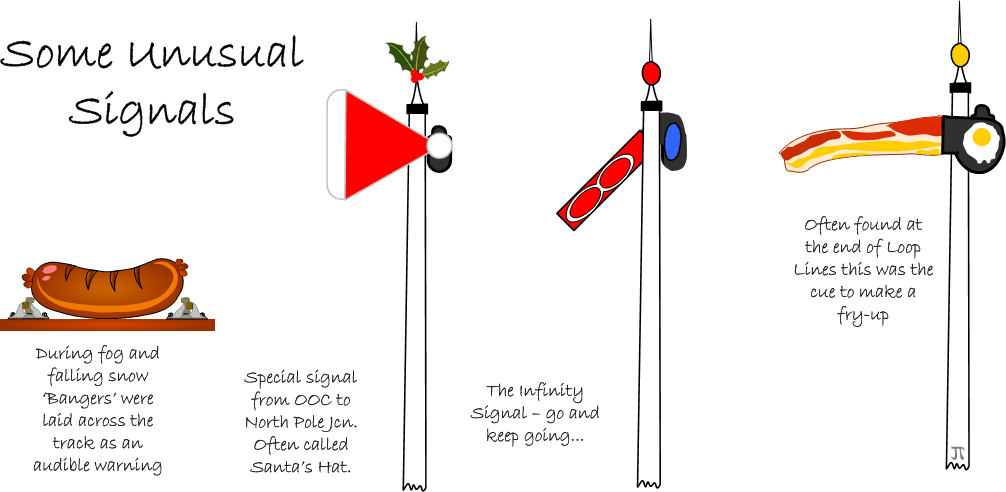
Noteworthy Nonsense
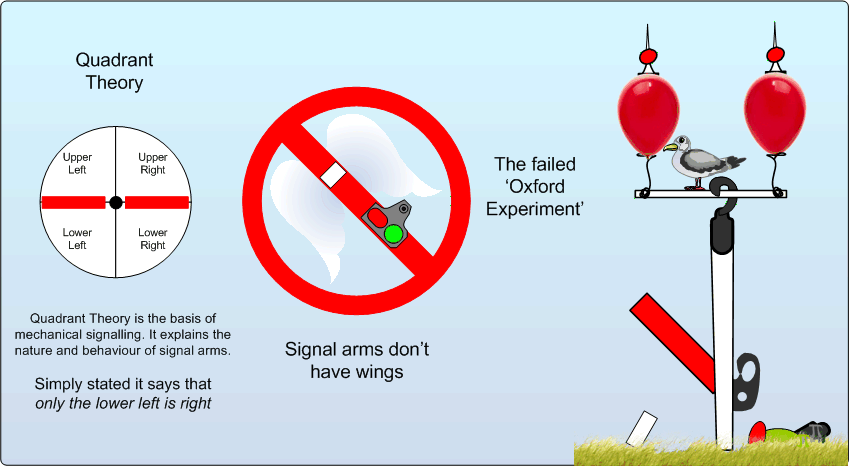

This next one is my take on the look of Great Western Railway Signals on which the sun always shines (no, really)

Western Region Panel
I designed and built this mini-example of a Signalling control panel of the 1960's/70's era as found all over the Western Region. This little version uses computer code rather than electro-mechanical relays to provided functionality. It had been on loan for many years to the Swindon Panel Society. If you find yourself at the Didcot Railway Centre be sure a look in on this one's big-brother.
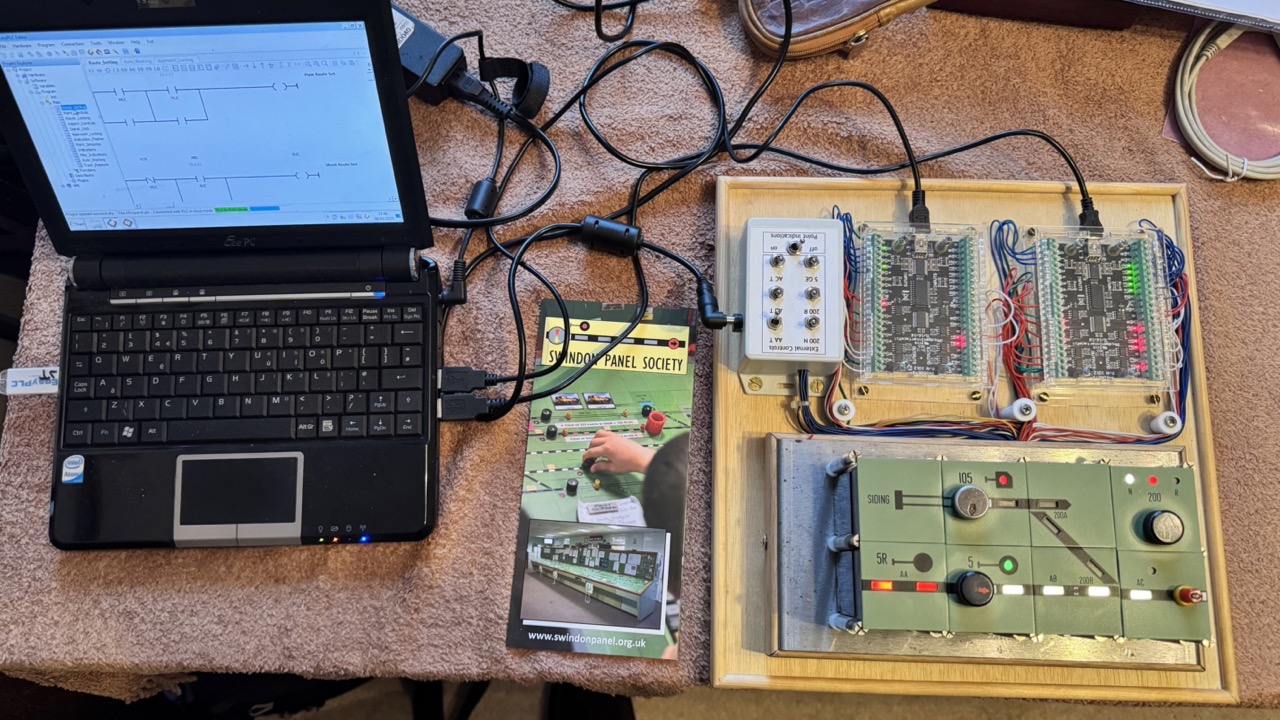
The Block Shelf
Having collected a number of Signal Box instruments over the years it's nice to have them displayed on a shelf. An operating sequence is driven by an Arduino program.
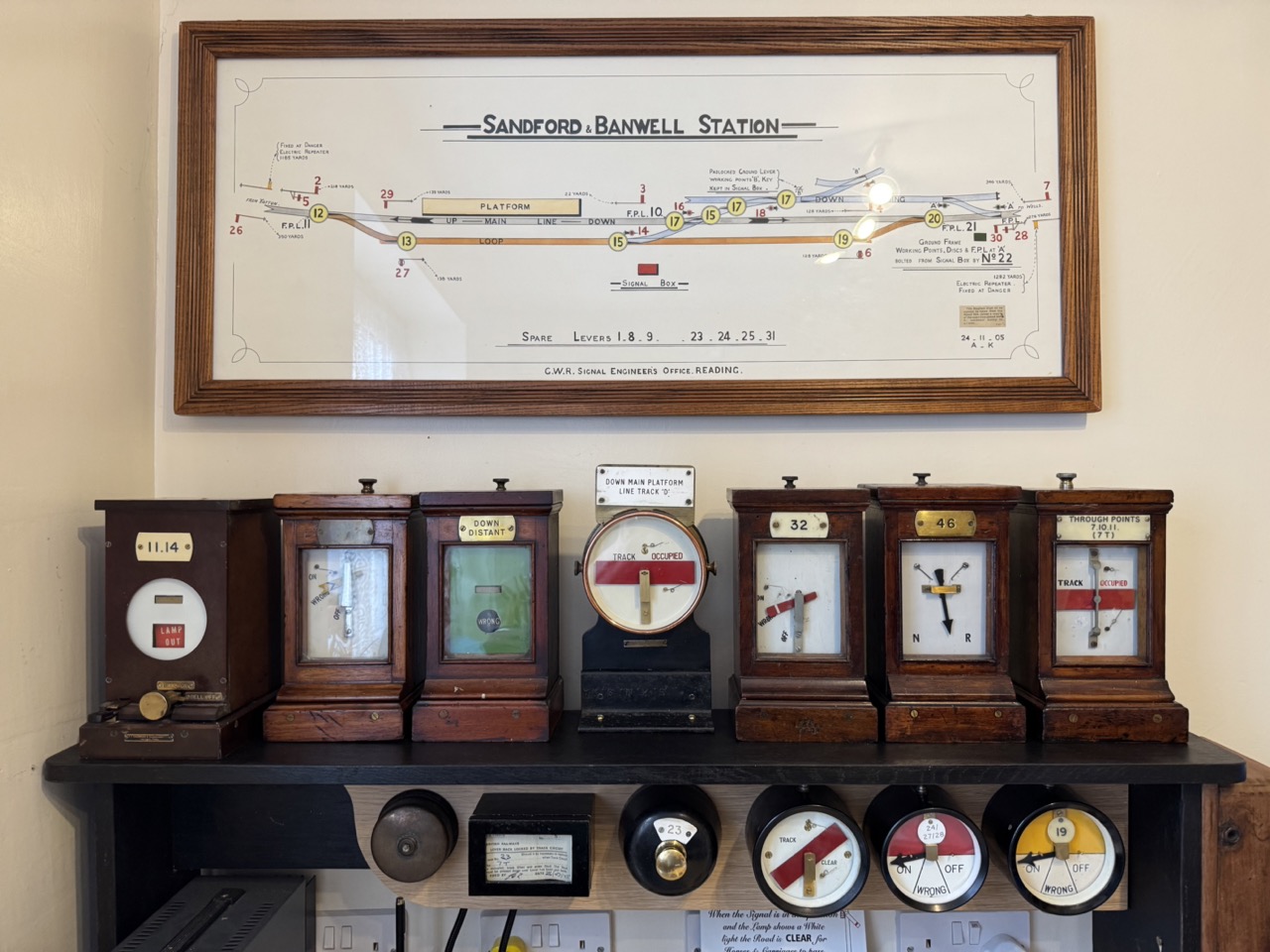
Dress the Doll
And finally, here's a little something for the long winter evenings. A cut-out-and-keep memento of your visit (be sure to print it first).
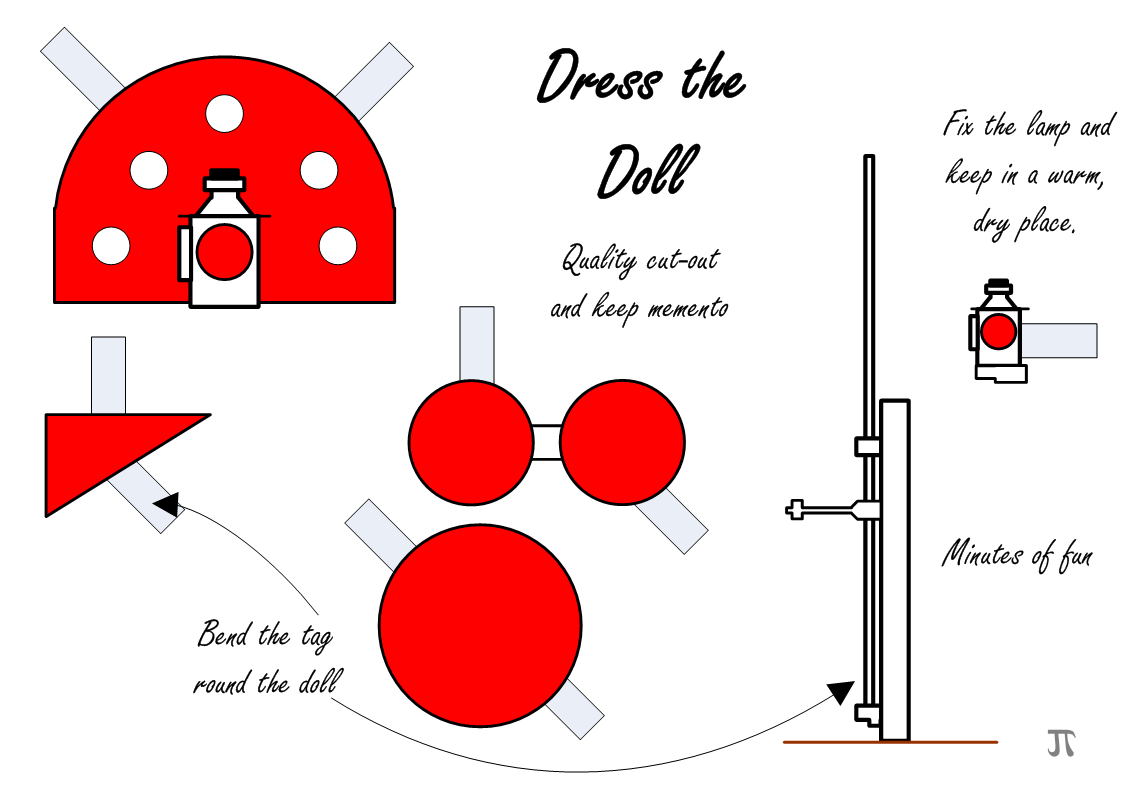
The Signal and Telegraph Department on Holiday
